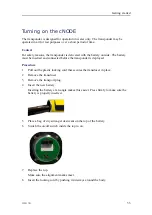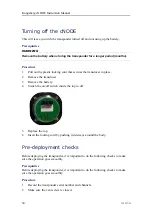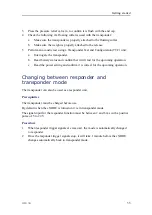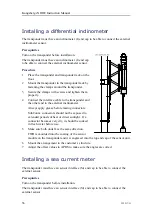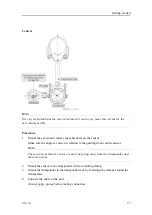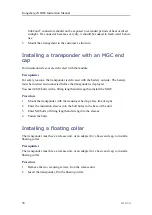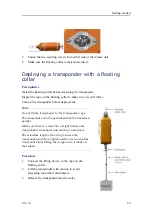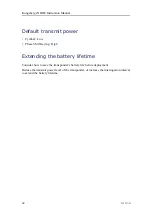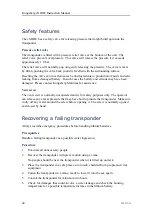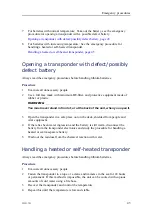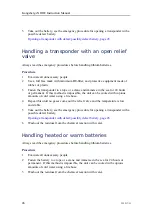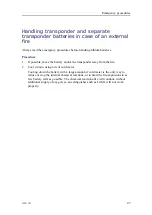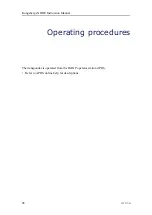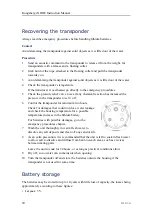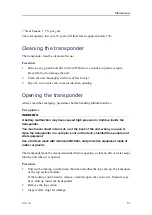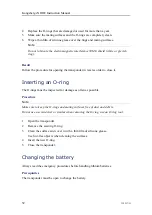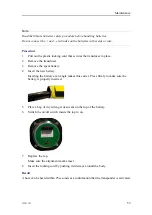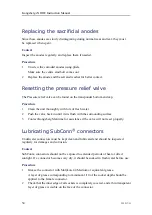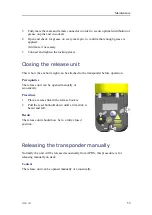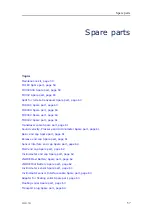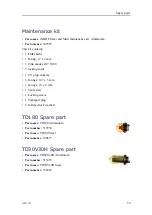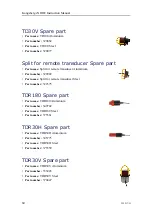
322217/G
45
7
For batteries with normal temperature: Take out the battery, see the emergency
procedure for opening a transponder with a possible defect battery.
Opening a transponder with defect/possibly defect battery, page 45
8
For batteries with increasing temperature: See the emergency procedure for
handling a heated or self-heated transponder.
Handling a heated or self-heated transponder, page 45
Opening a transponder with defect/possibly
defect battery
Always read the emergency procedures before handling lithium batteries.
Procedure
1
Evacuate all unnecessary people.
2
Use a full face mask with minimum BE-filter, and protective equipment made of
rubber or plastic.
WARNING
You must never stand in front of, or at the back of the unit, when you open it.
3
Open the transponder in a safe place out on the deck, shielded from people and
vital equipment.
4
If there has been water ingression and the battery is still warm, disconnect the
battery from the transponder electronics and study the procedure for handling a
heated or warm separate battery.
5
Wash out the residues from the chemical reaction with water.
Handling a heated or self-heated transponder
Always read the emergency procedures before handling lithium batteries.
Procedure
1
Evacuate all unnecessary people.
2
Fasten the transponder to a rope or a crane and immerse in the sea for 24 hours
or permanent. If this method is impossible, the unit can be cooled with copious
amounts of cold water using a fire hose.
3
Recover the transponder and control the temperature.
4
Repeat this until the temperature is low and stable.
Summary of Contents for cNODE Maxi
Page 1: ...Instruction Manual cNODE Maxi and Midi Transponders Medium Frequency 4000 metres ...
Page 2: ......
Page 69: ...322217 G 67 Differential inclinometer arrangement drawing About drawings ...
Page 70: ...68 322217 G Current meter arrangement drawing Kongsberg cNODE Instruction Manual ...
Page 98: ... 2019 Kongsberg Maritime ...



